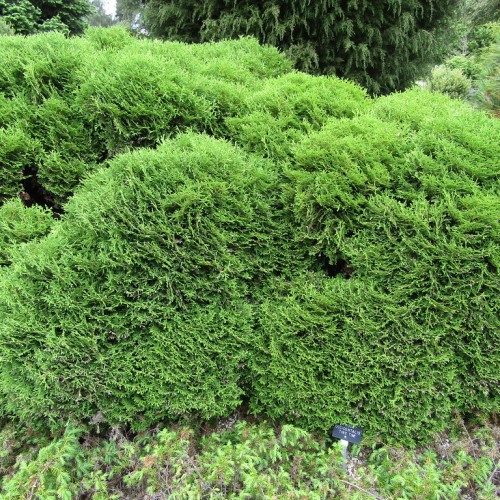
American arborvitae
Thuja occidentalis 'Little Gem'
Cycle:
Perennial
Watering:
Frequent
Hardiness Zone:
2 - 7
Flowers:
Flowers In Spring
Sun:
Full sun, Part sun/part shade
Soil:
Sandy Loamy Clay Rocky
Cones:
Yes
Leaf:
Yes
Growth Rate:
Moderate
Maintenance:
Low
Drought Tolerant:
Yes
Care Level:
Low
watering
American arborvitae should be watered lightly about once a week, preferably in the morning. Make sure soil is moist enough to reach your finger about 1 inch deep. Allow the soil to dry slightly between waterings and avoid over-watering. This species generally requires about 1 inch of water per week in order to thrive. In hot, dry climates, more frequent watering may be required. During periods of prolonged heat or drought, water more frequently.
sunlight
American arborvitae (Thuja occidentalis 'Little Gem') grow best in full sun, although they do tolerate some shade. For optimum growth, they need at least 6 to 8 hours of direct sunlight each day during the summer and at least 3 hours of direct sunlight each day during the winter. When planted in darker, shadier spots, they may produce fewer branches and leaves.
pruning
American arborvitae (Thuja occidentalis 'Little Gem') should be pruned relatively lightly 2-3 times in the spring. Prune any branches that are brown or dead, as well as any branches that cross over another and rub together. This will help make sure that there is plenty of room between the branches so air and light can reach the entire plant. To shape the plant, you can make pruning cuts to cut back the branch tips to the desired shape. Trimming off any new growth also helps to keep the plant in its desired shape. It is important to remember not to prune too much of the foliage as this can cause stress to the tree and possibly stunt the growth of the tree.
